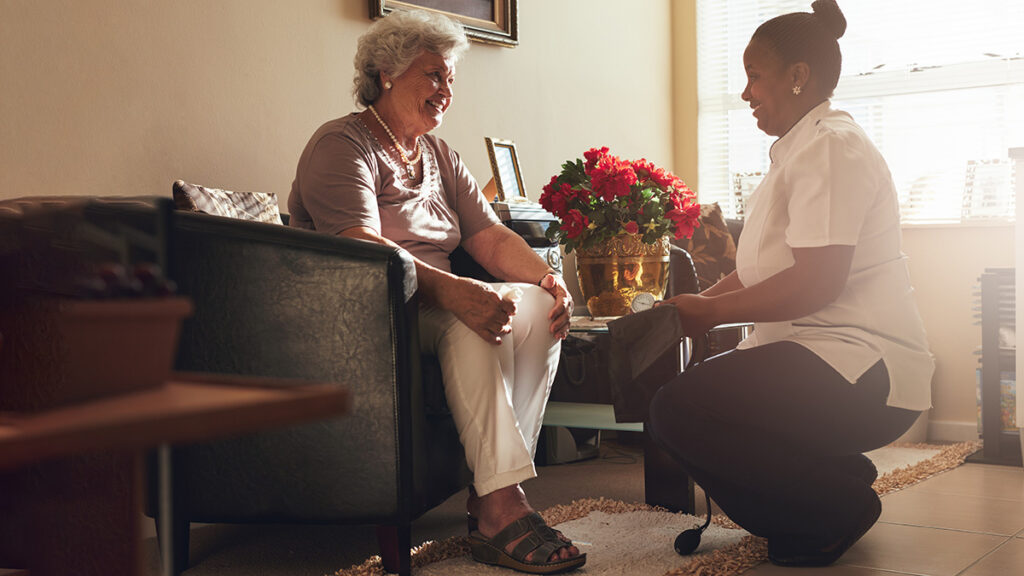As the UK’s population ages, the demand for comprehensive care solutions becomes increasingly urgent. The shift towards an older demographic, outlined in population projections from the Office for National Statistics, forecasts a 35% rise in the number of individuals aged 65 and above, soaring from 12.5 million in 2020 to an estimated 15.9 million in 2040. This demographic transformation underscores the need for innovative approaches to care, particularly the integration of connected care solutions, which could play a pivotal role in reshaping the landscape of care for vulnerable individuals.
The fiscal challenge: a growing need for enhanced care
The escalating proportion of senior citizens in the UK has far-reaching implications for public finances. The current “pay-as-you-go” system, wherein the working-age population funds the pensions and healthcare of the elderly, is set to face mounting pressures. With a rising number of pensioners per working-age individual, the inevitable consequence may be higher taxes, reduced spending per pensioner, or a combination of both. The financial strain is magnified by the escalating demands on healthcare and social care services as individuals live longer and require greater medical attention.
Pressures on healthcare and social care
The increasing elderly population is already translating into amplified demand for NHS services. Not only are people enjoying longer lifespans, necessitating extended use of healthcare resources, but their medical needs are greater, intensifying the burden on public finances and healthcare systems. Research by the Nuffield Trust reveals that NHS spending per person significantly rises after the age of 50, with individuals aged 85 and above requiring an average annual NHS spending of £7,000. This highlights the substantial financial implications of providing care to older individuals.
The financial challenges are tangible across the entire UK, with England witnessing an almost one-third increase in real-term NHS spending since 2013/14. Despite this, the NHS still requires substantial additional funding to meet mounting demands. Similar challenges are felt in Scotland, Wales, and Northern Ireland.
Impact on patients and healthcare performance
Despite efforts to bolster the healthcare workforce and allocate additional resources, the impact of the aging population on patient care remains tangible. Despite increased staffing, fewer patients are being treated, with significant declines in emergency admissions and outpatient appointments. Waiting lists for elective care treatment have surged to record levels, creating significant challenges for patients seeking timely medical attention.
The latest data from the ONS Winter Survey underscores the human toll of these challenges. A substantial percentage of respondents reported waiting for NHS appointments for extended periods, negatively impacting their lives. The accessibility of GP appointments remains an issue, with a notable proportion of individuals deciding against seeking medical attention due to expected lengthy wait times.
Connected care solutions: a glimmer of hope
Amidst the complex and multifaceted challenges posed by an aging population, connected care solutions emerge as a beacon of hope to alleviate some of the burdens faced by healthcare systems. These sensors offer an unobtrusive and comprehensive approach to monitoring living conditions. By measuring key indicators such as property temperature, humidity, light levels, movement, and noise levels, caregivers and healthcare professionals gain real-time insights into an individual’s environment and wellbeing.
Harnessing the power of data insights
One of the most significant benefits of connected care solutions is the ability to gather previously unseen data insights that support care provision and in-home monitoring. Through continuous monitoring, caregivers can identify patterns, trends, and anomalies that may indicate changes in an individual’s health or living conditions. This proactive approach allows for timely interventions and preventative measures, reducing the risk of adverse events.
The smart system’s programmable thresholds enable proactive responses and predictive maintenance, addressing issues such as mould and damp. This not only enhances the quality of care but also supports compliance with housing regulations, such as the 2023 Housing Act.
Reducing reliance on NHS and enhancing peace of mind
Connected care solutions have the potential to significantly reduce the burden on the NHS and the broader care sector. By enabling quicker response times and targeted actions when required, these technologies help alleviate the pressure on healthcare resources. Additionally, the reassurance provided by continuous monitoring and real-time alerts offers peace of mind to vulnerable individuals, their families, and professional caregivers.
Empowering independence through assisted living technology
The ultimate goal of connected care solutions is to empower vulnerable individuals to lead independent lives in the comfort of their own homes. These technologies strike a balance between independence and reassurance, offering tailored support that adapts to each individual’s unique needs. By providing cost-effective in-home monitoring and support, caregivers can better allocate resources and ensure that individuals receive the assistance they need without compromising their autonomy.
The path forward: leveraging technology for a more resilient care system
As the UK grapples with the complexities of an ageing population, the role of technology becomes paramount. Connected care solutions, like Smarter Technologies’ 5-in-1 Care Sensor, offer a glimmer of hope amidst the challenges. These innovative devices offer a multifaceted approach to care, encompassing safety, wellbeing, and support. By harnessing real-time data insights and fostering a new approach to care delivery, these technologies could help bridge the gap between an aging population’s needs and the resources available to meet them. As the UK navigates the evolving landscape of care, innovative solutions will prove essential in ensuring a resilient and effective healthcare system that serves the needs of all citizens, young and old.
Matthew Margetts is a Director at Smarter Technologies. His background includes working for blue-chip companies such as AppNexus, AOL/ Verizon, and Microsoft in the UK, Far East and Australia.
